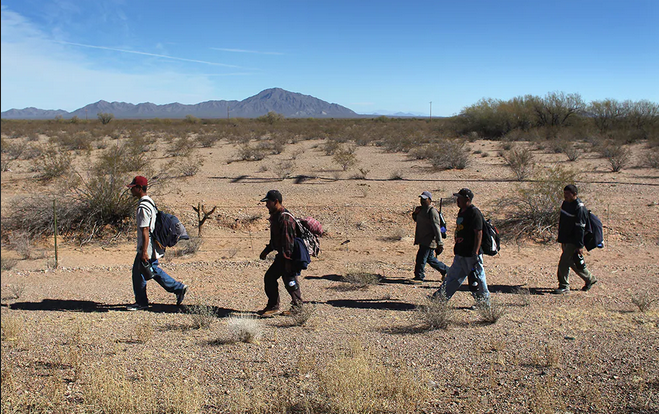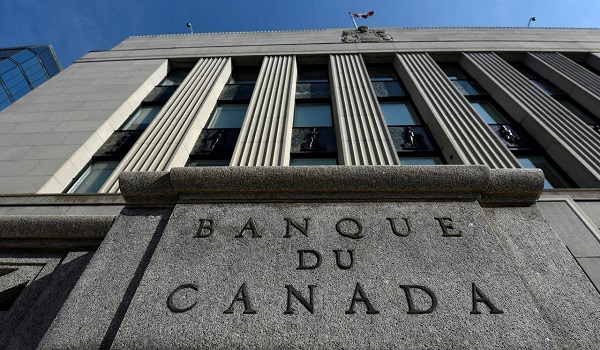An increasing number of undocumented Indian migrants enter America through ‘donkey’ route
Billboards crowd the small lanes of this northern Indian city, calling out to those who dream of a different future. A sign in the Punjabi language beckons: “Let’s go to America.”
An immigration agent, driving on an overpass amid the sea of billboards, reflected on the city’s brisk migration business. “Most of these agents would have tried sending clients through an illegal route to the U.S.,” said the Punjabi agent, adding that he himself had sent 60 such clients along routes that hopscotch through various countries before arriving in Mexico or Canada, where the migrants walk across the U.S. border.
Indians have come to make up the third-largest group of undocumented immigrants in the United States, according to the Pew Research Center’s 2021 estimates, which put the number of such Indians at 725,000. India is the only country in the top five outside Latin America, and since 2011, the number of undocumented Indians in the United States has grown by 70 percent, the fastest growth of all nationalities. Figures from U.S. Customs and Border Protection show that the number of undocumented Indian immigrants increased the fastest between 2020 and 2023.
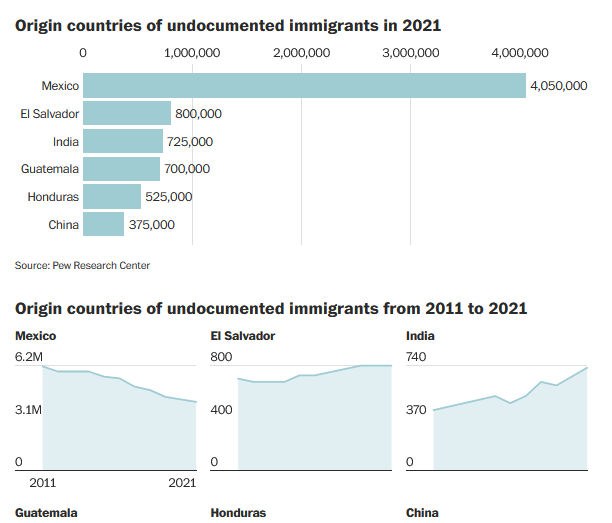
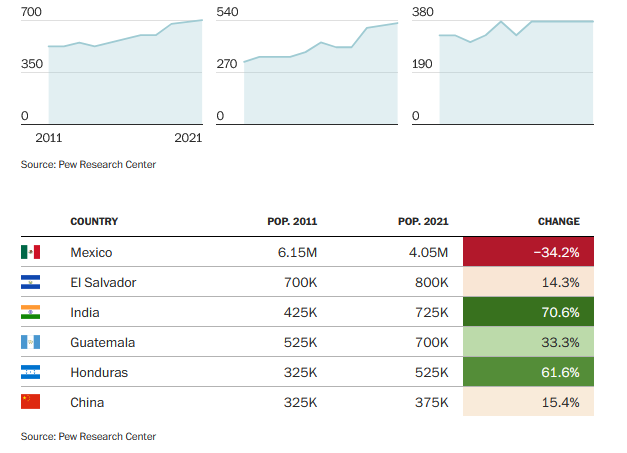
The immigrants are often from middle-class families. They frequently sell their land to pay for the journey — which families say can run $40,000 to $100,000 per person — hoping that working in America will triple their wages, produce a secure future for their children and yield a higher value in the marriage market for their sons.
These migrants are “not the desperately poor” and often come from the most prosperous states in India, said Devesh Kapur, a South Asian studies professor at Johns Hopkins University who focuses on the Indian diaspora. But faced with a shortage of attractive jobs and a struggling agricultural sector, they find that the wealth they have in India is not enough to transform their lives, and this creates “a culture of migration,” he said.
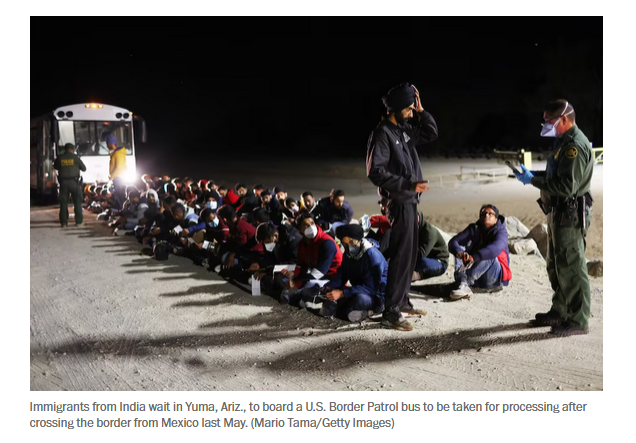
The migrants pass along a chain of countries chosen because of easy visa requirements, according to interviews with more than a dozen families and their agents in three states in western India. In each place, agents provide the migrants with their next plane ticket as they move closer and closer to Latin America or Canada. From there, depending on how much they pay, they walk or are transported to the U.S. border. If asked questions, they are told to say they don’t feel safe in India.
The trek — along what’s called the “donkey route,” after the Punjabi idiom “dunki,” which refers to hopping — can involve up to a dozen countries and take over a year.
“The danger of the route is not worth it,” said L.K. Yadav, a senior police official in Punjab who set up a team to investigate donkey cases. The country’s youth, he said, have been “misguided with distorted facts” about the journey.
Gursewak Singh, 28, said he spent nine months last year waiting in a New Delhi hotel, then one month in a Dubai hotel and, finally, one month in the Istanbul airport, with hundreds of other Indians waiting for their agents’ directions. “We were like birds in a cage. The airport lobby area became like a village meeting place,” he said. Then, Gursewak recounted, his bag, with his passport, was stolen in the airport.
It was a costly setback. To pay for the journey, he said, he had sold an acre of land for $30,000 and raised $6,000 more by mortgaging two other acres and borrowing money from relatives.
On a recent day back home in India’s Haryana state, he opened Snapchat on his phone. It was filled with images of friends who have reached the United States, dancing at the Mexican border while their families back home set off fireworks and cut a cake in the shape of an American flag. “I feel, let me go, too,” he said.
Gursewak’s route, through Dubai and Istanbul, is a common one. (In December, a chartered flight from Dubai to Nicaragua carrying more than 303 Indians was stopped in France over concerns of human smuggling.) Other routes go through Hanoi and Cairo.
“It’s a game of flight tickets,” said the Punjabi agent. He and his fellow agents trade notes: The Belarus border is tight, but the route from Serbia to Hungary to Austria fares better.
These days, speed is of the essence. Former president Donald Trump’s harsh rhetoric about immigration and promises to crack down on it have been noticed by some Indians. “People are now saying to get out quickly, before Trump comes back,” said the Punjabi agent, who spoke on the condition of anonymity to discuss illegal activities.
The agent, who has a trimmed beard and furled brows, works in Jalandhar, a center for the immigration business. He said he started almost two decades ago, working on securing student visas to Britain for Indians who applied to study at fake British colleges. Then, he worked on securing visas for fake overseas marriages and produced so many, he said, that he invested in wedding outfits. “The visas were churning out as fast as paper in a printer,” he said, snapping his fingers.
He began to send his clients on the donkey route to Turkey through Cyprus and then started sending them to America three years ago. For $55,000, he said, he now sends migrants by air to Italy and then on to Mexico, and finally by bus to the U.S. border.
Stepping onto the terrace of his home, he chatted with a friend who had tried to get to Germany but was stopped with seven others along the border between Belarus and Poland by police with fierce dogs. The friend said they were harshly beaten, then locked in the trunk of a car. One of the migrants died from the thrashings, and another died by suicide.
The agent said he’s ready to quit this line of work. He now wonders if he should be his own last America-bound client. “Maybe I will have a new start there. My family will then blow fireworks for me,” he said.
Jasanpreet Singh, 18, from Haryana, said he missed his 12th-grade exams last year while trying to get to the United States. He tried three times, using routes that, in part, passed through Uzbekistan, Thailand and Laos. On his third attempt, he said, he was caught in the Dubai airport with a fake visa for Serbia, tortured and jailed for a month.
Back in Haryana, he said that almost every home in his village has sent people abroad.
“If the government thought about our children’s future, about their salaries, then why would a child think about going outside?” said his father, Surinder Singh, who explained that he had sold all his family’s land and jewelry to pay for his son’s journey. “The biggest blame is on the government.”
Now, Surinder said, his family is looking to get its money back from the immigration agent. “Then we can try to send him again,” Surinder said of his son. “We aren’t going to keep him here.”
A 25-year-old woman from Gujarat state said her family had arranged to have her marry a stranger who had taken the donkey route. To meet him in 2017, she recalled, she trekked with another Gujarati woman for eight hours at night through a freezing Canadian forest, with an agent providing directions over the phone.
The woman, who spoke on the condition of anonymity because her journey had been illegal, recounted almost being swallowed by a river, crawling on all fours past police dogs and getting shocked by an electric fence, before reaching Washington state. “At that point, it was better to get caught than die in the cold,” said the woman.
After arriving in Chicago by train, she said, she found her fiancé was having an affair, and while they tried to patch up their relationship, it eventually became abusive and she had to escape.
She now urges prospective migrants to travel to the United States legally so that they don’t depend on people who manipulate them.
But until U.S. visas are more available, the Punjabi agent said, “the demand-and-supply chain will remain, like a mother and father. Those that want to go will find any way to reach. It doesn’t matter which route you show them.”
Anant Gupta in New Delhi contributed to this report.
This article was first reported by The Washington Post




